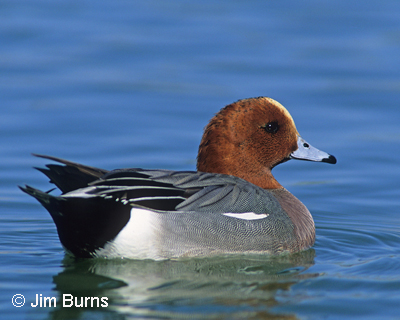
The general consensus of medical science is that the AIDS pandemic was greatly accelerated the first time an infected human boarded a jet. The H5N1 strain of avian flu will probably reach the Western Hemisphere in the same manner, but my reader's question begged a larger one. Is there any connection between this virulent new flu virus and birding? Yes, but the greatest threat is not to you. It's to the birds you’ve come to enjoy and care about.
H5N1 was discovered in southern China in 1996 where it claimed its first avian and human victims. Approximately 1.5 million slaughtered domestic chickens later, the virus seemed to be gone, but virologists knew better. Robert Webster, who works out of a research lab in Memphis and is the world’s leading expert on avian influenza, calls ducks the most dangerous animals in the world. Ducks carry avian flu viruses and transmit them to other waterfowl, often without becoming sick themselves. Ducks have wings. Ducks migrate.
In the spring of last year H5N1 killed 6300 wild birds at China’s largest inland lake. One tenth of the world’s bar-headed geese died in what appeared to be this virus’s first leap from poultry to wild waterfowl. Though H5N1 now seems to be marching inexorably across Asia, there is still no evidence it is transmitted easily between humans or between different bird species or along known migratory bird routes.
Nonetheless, here’s food for thought. Troy Corman, non-game bird specialist for Arizona Game and Fish, recently conducted a trial survey for the Phoenix area Winter Urban Waterbird Count. He tallied 1400 American wigeon, a common North American duck species. And a handful of Eurasian wigeons, the latter a closely related species which breeds across northern Asia and typically winters in Africa, the Middle East, and Southeast Asia.
The single most exciting aspect of birding is finding the unexpected, particularly a foreign bird completely out of its range. Every fall Asian migrants heading south from Siberian breeding grounds inexplicably veer left rather than right and show up along our Pacific Coast or in our interior west for the winter.
Are the media overreacting to bird flu? You bet, but in the aftermath of Katrina, why would this surprise you? For a balanced and comprehensive understanding of H5N1 and what it means to birders, check out these two articles: "The Truth About Bird Flu" in the February issue of Birder's World, and "The Flu Hunter" in the January issue of Smithsonian. Could the next big H5N1 outbreak occur right here in Arizona? Probably not. Should you be scared? Yes. Ducks have wings. Ducks migrate.